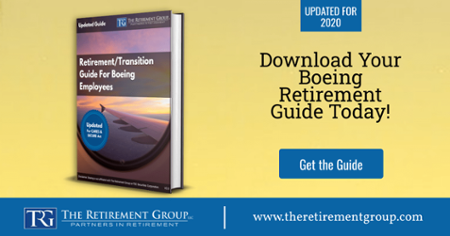When you've worked in recruiting for as long as I have, you receive a lot of questions from clients about retirement. In recent weeks I've had a lot of these questions come from my Boeing (BA) clients specifically, and similar inquiries from individuals at companies like Fortune 500. While I'm not a financial planner, I do like to have answers to my clients' questions, so I did some research on BA retirement planning and here is what I've found, which could be beneficial for employees at Fortune 500 as well.
Retirement planning, whether you are 20 or 60, is something we must actively plan towards annually. Unfortunately, numerous polls and experts say the majority of Americans don’t know how much to save or the income they will need.
Getting started… Your 20’s and early 30’s
Everyone knows it’s critical to start in your 20’s and early 30’s. Many suffer from impending anxiety from not saving enough, while others are grateful they feel secure.
TIME… It is the one advantage you will never get again. As some of you may know, compounding has significant impacts on future savings. Starting early matters and the key is to increase/maximize your BA or Fortune 500 401(k) contributions, depending on your employer.
Say you open a tax-deductible Individual Retirement Account (IRA) at age 25 and invest $100 a month until age 65. If the account earns 8% a year, you could amass $349,100 by age 65. If you wait until age 35 to start saving the same $100 a month, you could end up with $149,035 when you are 65. Waiting 10 years to start saving and investing could cost you substantially.
There are three primary reasons why a 401(k) is such a popular retirement savings vehicle: matching contributions, tax benefits, and compound growth.
Matching contributions is what it sounds like: It’s when your employer, whether it's BA, Fortune 500, or any other company, matches your own 401(k) contributions with company money. If your employer matches, they’ll typically match up to a certain percent of the amount you put in.
Let’s say that your employer matches up to 3% of your contributions to the plan, dollar for dollar. If you contribute 2% of your salary to your plan, your total 401(k) contribution will be 4% of your salary each month after the employer match is added. If you bump up your contribution by just 1% (so you’re putting in 3% of your salary), your total contribution is now 6% with the employer match.
Unfortunately, many workers don’t take full advantage of the employer match because they’re not putting in enough themselves. A recent study revealed that employees who don’t maximize the company match typically leave $1,336 of potential extra retirement money on the table each year.(1)
Working on it… Your 30’s through your 40’s.
At this stage, you’re likely full stride into your career and your income probably reflects that. The challenges to saving for retirement at this stage come from large competing expenses: a mortgage, raising children, and saving for their college. Try investing a minimum of 10% of your salary towards retirement. Always, maximize the BA or Fortune 500 contribution match, depending on where you work..
One of the classic conflicts is saving for retirement versus saving for college. Most financial planners will tell you that retirement should be your top priority because your child can usually find support from financial aid whereas you’ll be on your own to fund your retirement.
The home stretch… Your 50’s and 60’s.
Ideally, you’re at your peak earning years and some of the major household expenses, such as a mortgage or child-rearing, are behind you, or soon will be. Now, it’s time to boost your retirement savings goal to 20% or more of your income as it’s the last opportunity to stash away funds.
Workers age 50 or older, in 2020, can invest up to $19,500 into their retirement plan/401(k). Once they meet this limit they can add an additional $6,500 in catch up contributions. These limits are adjusted annually for inflation. If you are over 50, you may be eligible to use a catch-up contribution within your IRA.
Sources:
The Retirement Group or www.theretirementgroup.com
“Retirement Plans-Benefits & Savings.” U.S. Department of Labor, 2019, www.dol.gov/general/topic/retirement.
“Generating Income That Will Last throughout Retirement.” Fidelity, 22 Jan. 2019, www.fidelity.com/viewpoints/retirement/income-that-can-last-lifetime.
BA Summary Plan Description, 2017




